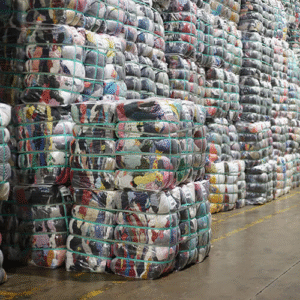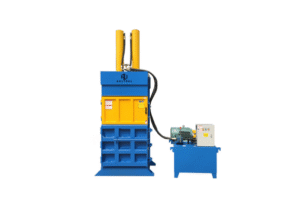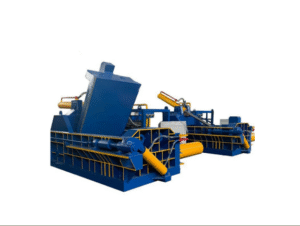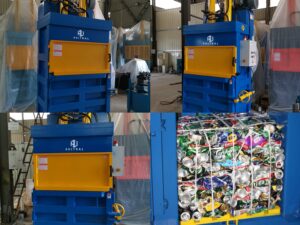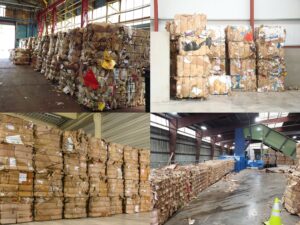Introduction
In today’s fast-paced industrial and recycling sectors, efficiency and waste management are critical. One of the most essential machines for handling bulk materials is the baler—a powerful device designed to compress and bind materials like cardboard, plastic, metal, and textiles into compact, manageable bales.
This comprehensive guide explores:
-
What balers are and how they work
-
Different types of balers and their applications
-
Key benefits of using balers in recycling and waste management
-
How to choose the right baler for your business
-
Future trends in baler technology
By the end of this article, you’ll have a deep understanding of why balers are indispensable in modern industries.
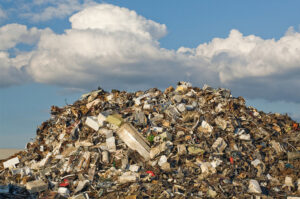
What Is a Baler?
A baler is a machine that compresses materials into dense, uniform blocks (bales) for easier handling, storage, and transportation. These machines are widely used in:
-
Recycling facilities (cardboard, paper, plastic, aluminum)
-
Agriculture (hay, straw, cotton)
-
Manufacturing & retail (scrap metal, textile waste)
-
Waste management (landfill reduction, compacting trash)
Balers improve logistics, reduce storage space, and enhance recycling efficiency by turning loose waste into tightly packed bales.
Types of Balers and Their Applications
Balers come in various designs, each suited for specific materials and industries. The main types include:
1. Vertical Balers
-
Best for: Small to medium businesses, retail stores, supermarkets
-
Materials: Cardboard, plastic, foam, textiles
-
How they work: Materials are loaded from the top, compressed vertically, and tied with wire or straps.
-
Advantages:
-
Space-efficient
-
Lower initial cost
-
Easy to operate
-
2. Horizontal Balers
-
Best for: Large recycling plants, industrial facilities
-
Materials: Cardboard, paper, metals, plastics
-
How they work: Materials are fed horizontally, compressed with high force, and automatically tied into bales.
-
Advantages:
-
Higher capacity & faster processing
-
Produces denser, more uniform bales
-
Can handle large volumes continuously
-
3. Two-Ram Balers (Closed-Door Balers)
-
Best for: Heavy-duty scrap metal recycling
-
Materials: Aluminum cans, steel, non-ferrous metals
-
How they work: Uses two hydraulic rams for extreme compression, producing ultra-dense bales.
-
Advantages:
-
Maximum compression force
-
Ideal for high-value scrap
-
Reduces transportation costs significantly
-
4. Auto-Tie Balers
-
Best for: High-volume recycling centers
-
Materials: Cardboard, plastic, paper
-
How they work: Automatically ties bales with wire or strapping, reducing manual labor.
-
Advantages:
-
Faster operation
-
Consistent bale quality
-
Reduced labor costs
-
5. Agricultural Balers (Round & Square Balers)
-
Best for: Farming & livestock
-
Materials: Hay, straw, silage
-
How they work: Collects and compresses crop residues into round or square bales for storage and feeding.
-
Advantages:
-
Efficient forage storage
-
Easier transportation
-
Weather-resistant bales
-
Key Benefits of Using Balers
Why should businesses invest in balers? Here are the top advantages:
1. Space Savings
Loose waste takes up significant storage space. Balers reduce volume by up to 90%, freeing up valuable warehouse or facility space.
2. Cost Reduction
-
Lower transportation costs (more material per truckload)
-
Reduced waste disposal fees (fewer pickups needed)
-
Increased recycling revenue (clean, compact bales fetch higher prices)
3. Environmental Impact
-
Boosts recycling rates by making waste easier to process
-
Reduces landfill waste
-
Lowers carbon footprint (fewer transport trips = less emissions)
4. Improved Workplace Safety
-
Reduces clutter and trip hazards
-
Minimizes manual handling of loose waste
-
Some balers come with safety features like emergency stop buttons
5. Revenue Generation
Recyclable bales (cardboard, PET plastic, aluminum) can be sold to recycling plants, creating an additional income stream.
How to Choose the Right Baler for Your Business
Selecting the best baler depends on several factors:
1. Material Type & Volume
-
Cardboard/paper: Vertical or horizontal balers
-
Plastic bottles: Auto-tie balers
-
Scrap metal: Two-ram balers
-
Agricultural waste: Round/square balers
2. Available Space
-
Small facilities: Vertical balers (compact footprint)
-
Large plants: Horizontal balers (higher output)
3. Budget & ROI
-
Low-cost option: Manual vertical balers
-
High-efficiency option: Fully automated horizontal balers
4. Automation Needs
-
Manual balers: Require operator intervention
-
Semi-auto balers: Partial automation
-
Fully auto balers: Minimal labor needed
Future Trends in Baler Technology
The baler industry is evolving with new innovations:
1. AI & Smart Balers
-
Sensors to optimize compression
-
Predictive maintenance alerts
2. Eco-Friendly Designs
-
Energy-efficient hydraulic systems
-
Solar-powered balers
3. IoT Integration
-
Remote monitoring & data tracking
-
Automated bale quality control
4. Mobile Balers
-
Compact, portable balers for on-site waste management
Conclusion
Balers are game-changers in waste management, recycling, and industrial operations. Whether you run a small retail store or a large scrap metal facility, investing in the right baler can cut costs, improve efficiency, and support sustainability.
By understanding the different types, benefits, and selection criteria, businesses can make informed decisions that maximize productivity and profitability.
Are you ready to upgrade your waste management system? Explore the best baler options today and transform your operations!

